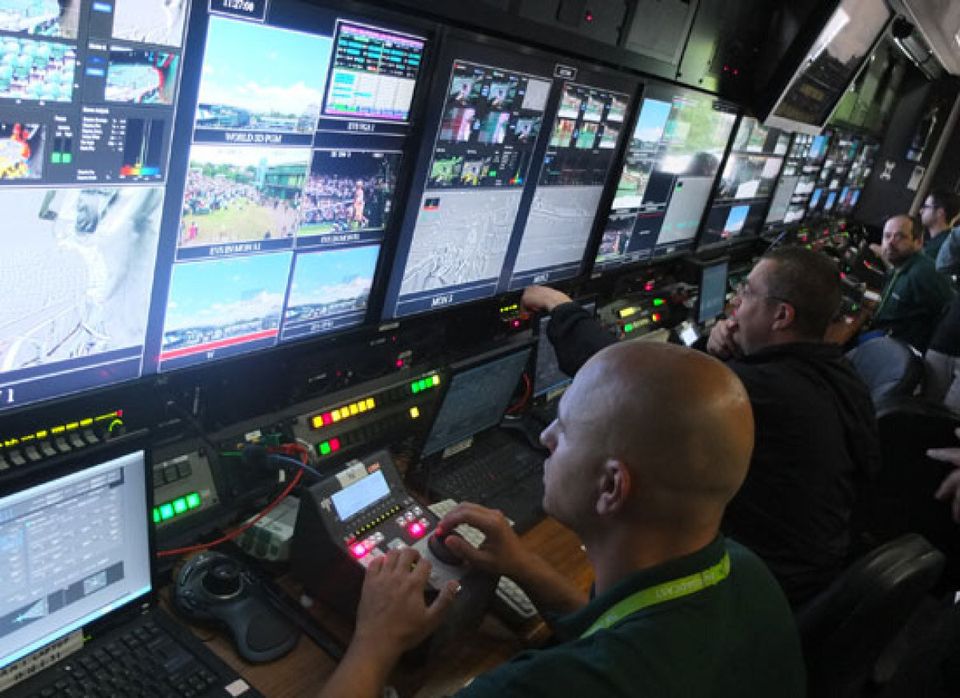If you went to Wimbledon during the 2012 Championships - or you head there for the Olympics in a couple of weeks - it's possible to feel like nothing has changed in decades.
The strawberries are still there. So is Fred Perry. (And the rain, of course.)
Behind the scenes, however, it's a different story. More than most annual sports events, Wimbledon has taken tech to heart - and at this year's champs Sony gave HuffPost the chance to see how some of the high-tech improvements are taking Wimbledon to the next level in high tech broadcasting.
First up was Sony Pro's 3D broadcasting system - which this year expanded its coverage from just a few days to the men's quarter finals, semis and final, and the women's semis and finals.
That 3D coverage was shown up by around 14 broadcasters worldwide, including the BBC, Canal+ and ESPN - and the final was even broadcast in 50 cinemas across the UK in full 3D, for the first time.
If you haven't seen it, the 3D coverage really is stunning. If you'd expect it to be all tennis balls flying at your face, you're mistaken. Sony's 3D takes you into the game - they call it the "perfect window" - but it doesn't slam the game into your face at 90 mph. The shots are picked intelligently, and with a sense of artistry. No one prods a tennis racket at you for no reason. It really is ace. (Pun intended.)
A total of six 3D cameras were used at this year's championships in 3D - four around the court, one on the scoreboard and a TD300 camcorder fixed on the Royal Box. Another in the broadcast suite was used for ESPN's interviews and post-match coverage.
Because the cameras can't interfere with the main HD production - or Wimbledon's architecture - they have to find unique angles from which to film. Mark Gryinyer, who looks after 3D business development at Sony Pro, said that's forced them to be more creative - picking angles that shot the curved path of the ball and providing depth where you wouldn't expect to see it.
It takes two trucks, 40 crew and about 30 terabytes of hard disk space to run the Sony 3D system, he said.
In the engineering truck, stereographers and producers take the camera feeds and artfully tune them to 3D quality broadcasting. Depth is added by instinct - sometimes it is turned up to show greater depth, other times it is reduced to make sure it's comfortable for the viewer - and Gryinyer says it takes training and feel to know how to get this right.
Meanwhile a few feet away in the production truck, sound editing, direction and transitions are added. The two are deliberately kept separate, to allow the producers to tell the "story" of the match without having to worry about 3D depth and other technical niggles.
At one desk in the production truck sits a chap with a set of screens fixed on Hawk-Eye. That shot-tracking tech has been used at Wimbledon since 2007 for call reviews, and has since become a regular fixture of the tournament - an innovation loved by the crowds as much as the nerds.
It is also another Sony innovation - Hawk-Eye having been bought by the company in 2011.
Up at Centre Court, in a small and cramped commentary box, sits the HawkEye review team itself. Up to 18 people work the Championships in shifts - four at any one time, and not only have to monitor the shots and provide calls as needed, but have to keep the system tuned to perfection.
Luke Aggas, who runs the HawkEye team at Wimbledon, said that the ITF can demand proof that the system is accurate to within a few millimetres at any time they like - and that the 10 cameras used to track the ball have to be tuned with lasers several times per tournament.
Up to the finals more than 600 challenges were made at the tournament - and 200 were successful. The Hawk-Eye system retains every shot of every game, for future reference - meaning that every point since the system has been in place has been tracked, catalogued and stored away for future historians.
It's all pretty amazing stuff. Unfortunately, thanks to Andy Murray, we spent most of this year watching the games behind our sofa.
Let's hope he goes out in the first round next year, so we can enjoy the 3D tech and Hawk-Eye reviews in peace.
